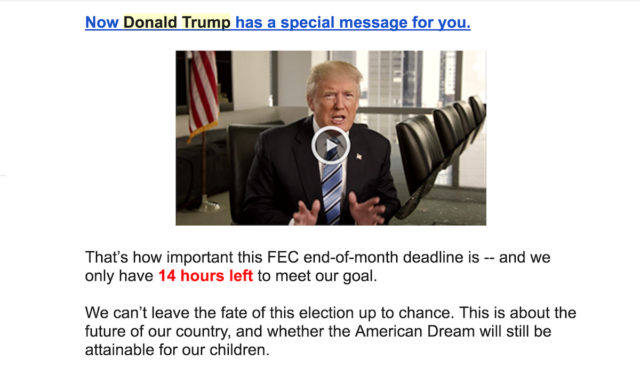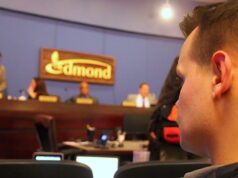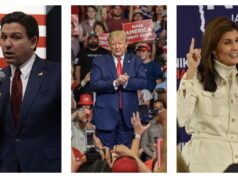Believe it or not, I get Donald Trump emails every day.
To cover the then-GOP insurgent presidential candidate at his Oklahoma State Fairgrounds appearance nearly one year ago, I had to sign up for press credentials via email.
While Trump’s unconventional campaign is well-documented, the unique nature of his email list has mostly escaped public discussion. For nine months after Trump’s team added me to its list, the campaign did not ask me (or anyone else, they claim) for money.
Meanwhile, throughout the primary process, Trump’s opponents were begging constantly for dollars to drive their democracy dirigibles around the country. U.S. Sen. Ted Cruz’s were the most absurd emails that I received, replete with bold words, italic words, capitalized words, underlined words, blue words, green buttons and yellow highlighting.
From a Feb. 9 Cruz request for money:
After the hard-fought battles in Iowa and New Hampshire, we’ve dug deep into our campaign accounts…and made a major dent in our political budget.
I need your IMMEDIATE support for my South Carolina GOTV fund, or I risk squandering tonight’s momentum — the momentum you and our volunteers have worked SO HARD to help me build.
Yep, ol’ Ted Cruz was SO HARD up for campaign cash.
Trump emails took different tone
Trump, on the other hand, won the GOP primary while only sending his email list personal messages that were two or three paragraphs long. When they asked for anything at all, they simply asked recipients to consider buying supportive T-shirts, which is a far cry from begging for cash Cruz-style.
On June 21, less than one month before receiving the formal GOP nomination, Trump sent the first flat-out fundraising email of his campaign. That means two things:
First, that tactic gave the self-funding billionaire a leg up on his primary opponents. People who might have found themselves on multiple GOP-candidate email lists were being peppered for money by Cruz, U.S. Sen. Marco Rubio (R-Fla.), Ohio Gov. John Kasich and others, but Trump was simply sending them feel-good photos, short requests for support and invitations to help phonebank before primaries.
But second, Trump’s late foray into online fundraising appears to have left him disadvantaged for the general election. Regarding the candidate’s numbers here in Oklahoma, the Tulsa World’s Randy Krehbiel cranked out a Monday headline of “Donald Trump fundraising lags in Oklahoma as well as nationally.”
Through the end of July, Trump has raised $526,000 from Oklahoma addresses — or about 25 percent as much as 2012 Republican nominee Mitt Romney at the same point in his campaign.
Republican consultant Fount Holland said that’s mostly because Trump didn’t really begin fundraising until early summer.
“He lived off earned media,” Holland said. “As a result, he hasn’t built the kind of fundraising machine that traditional candidates spent time putting in place.”
Holland said that’s likely to hamper Trump as the election approaches, but it may not matter.
”I would imagine many donors are concerned about (Democrat Hillary Clinton’s) policies as they relate to the energy industry, and other business,” Holland said. “If Trump has a chance, it’s because of the disdain for Hillary.”
Clinton, despite her likeability problem, has raised nearly triple the money Trump has from Oklahoma donors, according to Krehbiel’s analysis.
Examining Trump and Clinton’s recent fundraising emails might give evidence as to why.
‘This check is for you’
As the Aug. 31 campaign-finance reporting deadline loomed this week, both candidates have been prompt with email requests for “critical” donations. This is standard for any major political campaign.
In one corner of my inbox, Trump’s donor pitch has centered around a “personal match” he has pledged to all donations received this week. It began at $1 million and jumped to $2 million Wednesday. His emails have explained the math, wherein $25 donated becomes $50 donated after Trump personally matches it.
“This check is for you,” read the subject line of an Aug. 30 email featuring faux checks made out to the campaign committee from The Donald himself. “I know a good opportunity when I see one, and this is one of them. And opportunities like this don’t last long.”
At 9:30 a.m. on Wednesday, “Team Trump” sent another message highlighting who else had pitched this matching “opportunity” to me et al: Republican National Committee Chairman Reince Priebus; Eric Trump; Katrina Pierson (who?).
“Now Donald Trump has a special message for you,” the email emphasized in a link to this video in which Trump says Clinton spends her time raising money from Wall Street while he spends his time “campaigning.”
That’s an artful way of explaining the fact Clinton has financially been able to run TV ads for the last month while Trump hasn’t (though he is planning a $10 million buy to start next week). But below that video, Trump even makes note of his campaign’s cash lag:
Last month Hillary and her Wall Street donors outraised us by nearly $10 million.
Why?
For starters, Hillary Clinton has effectively been building a campaign-fundraising apparatus since 2007, though it’s important to note that her 2008 campaign struggled so badly that it remained in debt through 2012.
Her campaign has also had a high burn rate this time around, which refers to the percentage of a candidate’s fundraising that gets spent within the same quarter.
But Clinton led Trump in campaign cash hauled in prior to the most recent quarter ($315 million to $125 million) and cash on hand ($58 million to $48 million).
And in the days leading up to the Aug. 31 reporting deadline, Clinton’s campaign emailed out fundraising appeals from First Lady Michelle Obama, Vice President Joe Biden and former President Jimmy Carter, who used his email to highlight something Clinton’s opponent doesn’t have: decades worth of important sociopolitical experience.
I’ve known Hillary for decades — and her record as a public servant is superb. In 1977, I appointed her to the board of the Legal Services Corporation (LSC), a nonprofit that provides legal assistance to Americans in need — she went on to become the first woman to chair the board. Over her tenure, funding for the LSC tripled, allowing the organization to expand legal aid to every congressional district, and handle 1.5 million cases for poor clients each year. As First Lady, Clinton continued to advocate for legal services funding.
With reports on the period ending Wednesday soon to be available, the results could show whether Trump was able to close the funds-available gap or whether Clinton was able to widen it.
Either way, get ready for a barrage of television ads over the next nine weeks.
(Update: A previous version of this story misspelled RNC Chairman Reince Priebus’s name.)





















